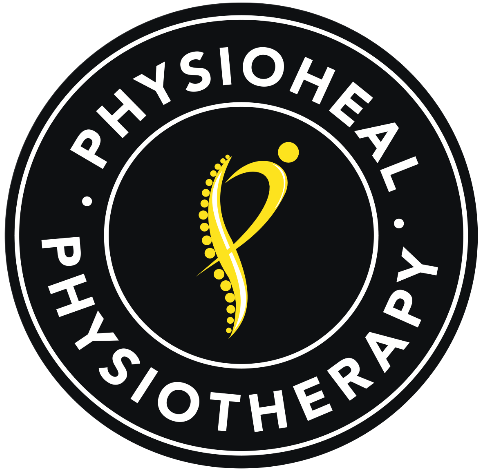Physiotherapy is an important form of healthcare which focuses on the diagnosis, management, treatment and prevention of physical impairment, functional disability and movement disorders. It includes both physical techniques such as therapeutic exercise and manual therapy, as well as educational techniques to promote healthy behaviours and lifestyle changes.
By assessing the physical condition of a patient and detecting impairments, physiotherapists can develop comprehensive rehabilitation plans to help restore movement, improve quality of life and reduce the risk of recurrent or future physical disabilities or pain. For patients seeking successful rehabilitative care, physiotherapy can be an excellent choice. Read on more about the wide-ranging aspects of physiotherapy, focusing on how it can help treat joint pain.
Content Of The Article
- Benefits of physiotherapy
- Physiotherapy and joint pain
- 5 Ways Physical Therapy Can Alleviate Joint Pain
- Finding the best physiotherapy centre near you to treat joint pain
- Concluding remarks
Benefits Of Physiotherapy
Physiotherapy is used to help people improve their physical functioning. The benefits of physiotherapy are countless, from helping manage chronic pain to assist in rehabilitation after surgery.
It can be used to treat neurologic, cardiopulmonary and musculoskeletal conditions, as well as provide pain relief and injury prevention. Physiotherapy also helps improve mobility and increases strength, flexibility and endurance. It can also provide relief from headaches and backaches, as well as reduce stress levels.
Additionally, physiotherapists provide coordination therapy to help with balance issues often associated with age or illness. Finally, it may either slow or stop the progression of chronic illnesses like arthritis or obesity by improving quality of life through exercise and stretching routines specifically tailored to individual needs. No matter one’s age or condition, the proven benefits of physiotherapy are considerable.
Physiotherapy And Joint Pain
Physiotherapy is an effective, non-invasive way to address joint pain. Its aim is to improve movement and function and reduce pain. It can be used to decrease inflammation, restore mobility, strengthen weak muscles, and optimise the body’s natural healing process. Physiotherapists use a personalised treatment plan of exercises and stretch to achieve the best outcome for an individual patient based on their condition and lifestyle. With its holistic approach incorporating physical exercises with education around lifestyle changes such as posture correction, physiotherapy can provide a dramatic improvement in joint pain when followed correctly.
5 Ways Physical Therapy Can Alleviate Joint Pain
Joint pain can be extremely difficult to manage and can drastically reduce your quality of life. Thankfully, physical therapy offers several solutions that can help alleviate joint pain and get you to live your best life again. Physical therapists are highly trained to assess an individual’s specific condition and provide treatments designed to reduce or eliminate the source of pain. The five most helpful therapies for joint pain include mobilisation and manipulation, stretching and strengthening exercises, physical modalities, aquatic therapy, and dry needling.
Each of these therapies has its unique advantages. Mobilisation and manipulation, for example, constitute a key part of physiotherapy in treating joint pain. Mobilisation is when a skilled physiotherapist uses an assortment of stretches, exercises and manual techniques to encourage the body’s joints to move freely and with less pain.
On the other hand, manipulation involves the clinician manually moving individual joints in a specific direction. Through these two processes, a range of conditions that affect the soft tissue leading to muscle imbalances or joint dysfunction, can be treated. Whether it’s through mobilisation or manipulation, physiotherapists are typically able to re-establish mobility and reduce the patient’s joint pain.
Through properly applied physical therapy techniques, patients can receive fast relief from joint pain while also restoring joint function. Working with a physical therapist may just be the answer to putting an end to painful joint pain.
Finding The Best Physiotherapy Near You To Treat Joint Pain
There are some tried and tested steps that can help anyone make an informed decision. First, you should ask friends and family for any recommendations they may have regarding local physiotherapy centres. Reviews from peers can provide valuable insight into the quality of service provided by various centres. Furthermore, it’s wise to look up the centre online and research its credentials to make sure their medical staff is qualified to handle joint pain treatment.
Additionally, looking at the facilities available at the centre is another important aspect to consider; make sure they have the right technology and instruments to ensure fast results. Lastly, while cost plays an important role in these decisions, don’t forget that going to an experienced doctor with up-to-date knowledge of your condition is key to getting maximum relief.
Concluding Remarks
Physioheal is one of the leading physiotherapy clinics in Sector 56, Gurgaon, providing quality physiotherapy services and working in partnership with individuals of all ages to break down the barriers to physical function, whether that means working with patients pre and post-surgery, helping people come back from illness and chronic disease, injury, industrial and motor vehicle accidents and age-related conditions. Please contact us now to learn more.
